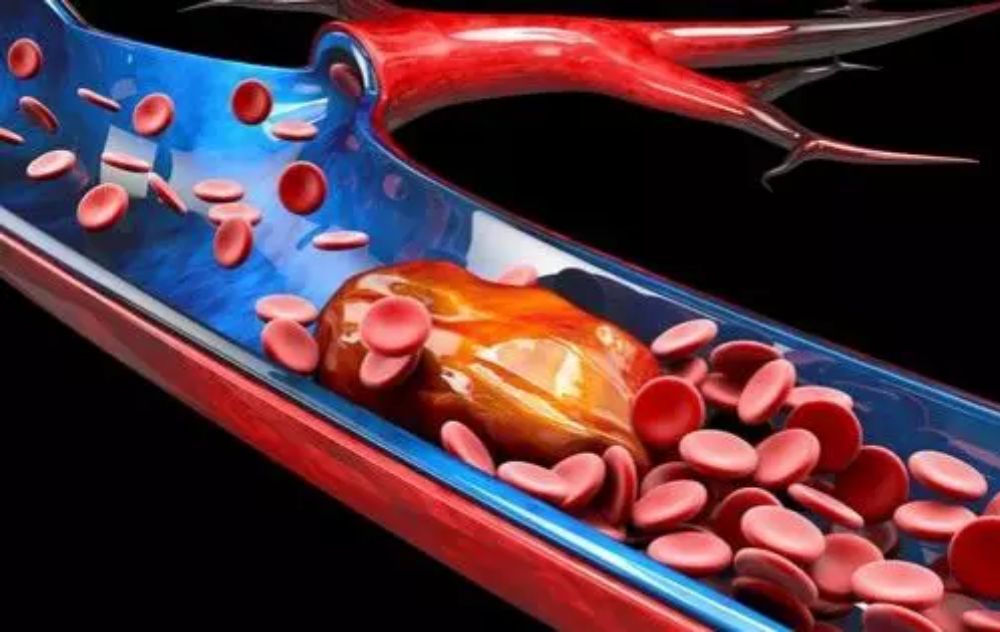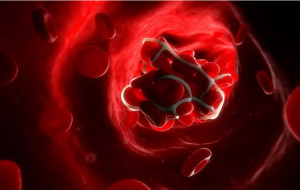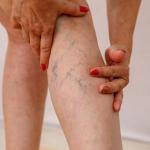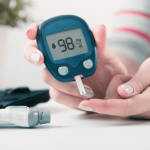
When you think of blood clots, most people think of brain aneurysms, not their veins. However, blood clots can form in both superficial and deep veins throughout the body, especially the legs. A superficial vein is close to the surface of your skin and often visible. Superficial veins are not paired with an artery, unlike deep veins, which typically have an artery close by. There are two types of conditions that occur when you have blood clots in your veins, superficial thrombophlebitis and deep vein thrombosis. You might be wondering: what exactly are blood clots, and how do they form?
What Are Blood Clots?
Blood has a very important and difficult task to do: it must continuously and smoothly flow throughout your body for your entire life to sustain every move you make. When you’re injured, your blood flow in the injured area must quickly shut off to prevent significant blood loss. Blood clots can save your life and are healthy when they prevent blood loss caused by injury. The physical appearance of a blood clot is similar to a gel-like matter which is formed by fibrin and platelets. These clots generally repair damaged blood vessels, which can be either in an artery or a vein.
Blood clots cause a problem when they form where they aren’t required. For example, if a blood clot forms within your blood vessels, this can lead to medical emergencies such as a stroke or heart attack. Blood clots can form in the blood vessel of any body part, but usually they affect the legs—especially when your lifestyle includes sitting for longer periods of time.
How Do Blood Clots Form?
A blood clot normally forms whenever your blood vessels in your body get damaged. When a blood vessel gets damaged, platelets start to adhere to the vessel’s cut edges. Then, these platelets start to release chemicals that help them attract more and more platelets. That reaction leads to the formation of a platelet plug. Once this plug is formed, bleeding stops. The inside of the wound is then sealed shut. Small molecules—which are known as clotting factors—cause fibrin (which is a strand of blood-borne materials) to band together. In the end, the damaged blood vessel will heal, and the clot will naturally dissolve after a couple of days.
The real danger arises when a clot forms inside a vein. This kind of clot is extremely dangerous for your health because the body won’t dissolve it easily.
What is Superficial Thrombophlebitis?
Superficial thrombophlebitis, also referred to as superficial vein thrombosis (SVT), occurs when superficial veins (vein close to the surface of the skin) become inflamed and form a blood clot. While once thought as a benign condition that required minimal treatment, increasing cases of SVT developing into more serious vein issues such as deep vein thrombosis (DVT) or pulmonary embolism has made medical professionals rethink the seriousness of this condition. Multiple aspects of a person’s health can lead to the development of SVT, but varicose veins are most frequently linked to this condition. Varicose veins can also be found in the deep veins within the legs, and when blood clots form in the deep veins, it is known as deep vein thrombosis.
What is Deep Vein Thrombosis?
Deep vein thrombosis (DVT) is when a blood clot forms in one of the deep veins, and it occurs most often in the legs. The legs are more prone to gravity, which puts pressure on veins, and are responsible for pumping majority of your blood back to your heart. Varicose veins in your deep saphenous veins are more difficult to detect, and often symptoms can include tingling or numbness in the legs; pain while walking that goes away when at rest; and swelling of the feet, ankles, and legs. Since varicose veins are diseased veins that prevent the proper flow of blood, blood clots are more prone to forming. If a blood clot forms in your deep veins, you most likely will not know, but there are a variety of symptoms of a blood clot in your deep vein to look out for. These symptoms include:
- Swelling of your foot, ankle, or leg, typically on one side
- Severe unexplained pain in your foot and ankle
- Skin discoloration
DVT usually forms in the deep veins of your arms or legs. Such a clot is highly dangerous because if it breaks off and becomes mobile, it can easily travel to your lungs and cause a pulmonary embolism. Many people often do not realize they have DVT until they are in an emergency situation in which they require immediate treatment. In most cases, DVT arises when you live in sedentary lifestyle.
How Do Varicose Veins Cause Blood Clots?
Varicose veins occur because your vein valves are damaged, either from too much pressure or other factors, resulting in blood flowing in the opposite direction that it’s supposed to. This means blood can pool in your veins, causing inflammation and further damage to blood vessels. Your body will form blood clots in an attempt to heal the damage. Since the clot forms within the vein, the body has a more difficult time breaking down the clot when it’s no longer needed.
How Do You Prevent Blood Clots From Happening?
If you’re confined to your bed because of an injury or illness or are slated for a surgery, then you may be more at risk for developing DVT. Activity promotes healthy circulation, so when you’re unable to be active, it’s important to talk to your doctor about different ways to prevent this medical condition from forming in the first place.
For many people, walking soon after their operation is finished can bring down the risk of DVT. Most times, doctors can prescribe anti-clotting drugs if you’re at a high risk of developing DVT after surgery.
Yet another option to prevent blood clots is to wear a pair of graduated compression stockings. These knee-high socks can apply pressure to your lower legs—especially your ankles. These stockings can increase the flow of blood from your ankle toward your thigh. It is often recommended to wear these compression stockings after vein treatment if you plan to sit or stand for long stretches of time. This can help in the healing process and lower the risk of DVT.
If you have varicose veins, the most effective way to prevent DVT is to get vein treatment. Vein treatment reduces the likelihood of blood clots because it fixes broken vein valves. During vein treatment, the damaged veins are closed, rerouting blood flow to healthier veins. Once the flow is rerouted, pooling will cease and circulation can improve. Improved circulation helps reduce your chances of developing DVT because your legs do not need to work as hard to successfully pump blood from your legs back up to your heart.
Reduce Your Risk of Blood Clots with Vein Treatment
USA Vein Clinics is a trusted vein treatment center. Our medical facility has top vascular surgeons who can perform varicose vein treatment for each patient’s individual needs. These minimally invasive treatments can help alleviate the pain and discomfort caused by the symptoms of varicose veins and other vein diseases, as well as decrease your risk of blood clots.
We make it our mission to support our patients in every step of the treatment right from the initial diagnosis through the recovery plan. Our physicians are committed to helping patients lead happier, healthier, and more active lifestyles. Our vein specialists strive to make varicose vein treatments and spider vein treatments as stress-free and simple as possible for their patients.
Contact USA Vein Clinics today to begin your road to recovery by calling 888-768-3467 or schedule an appointment online today.






